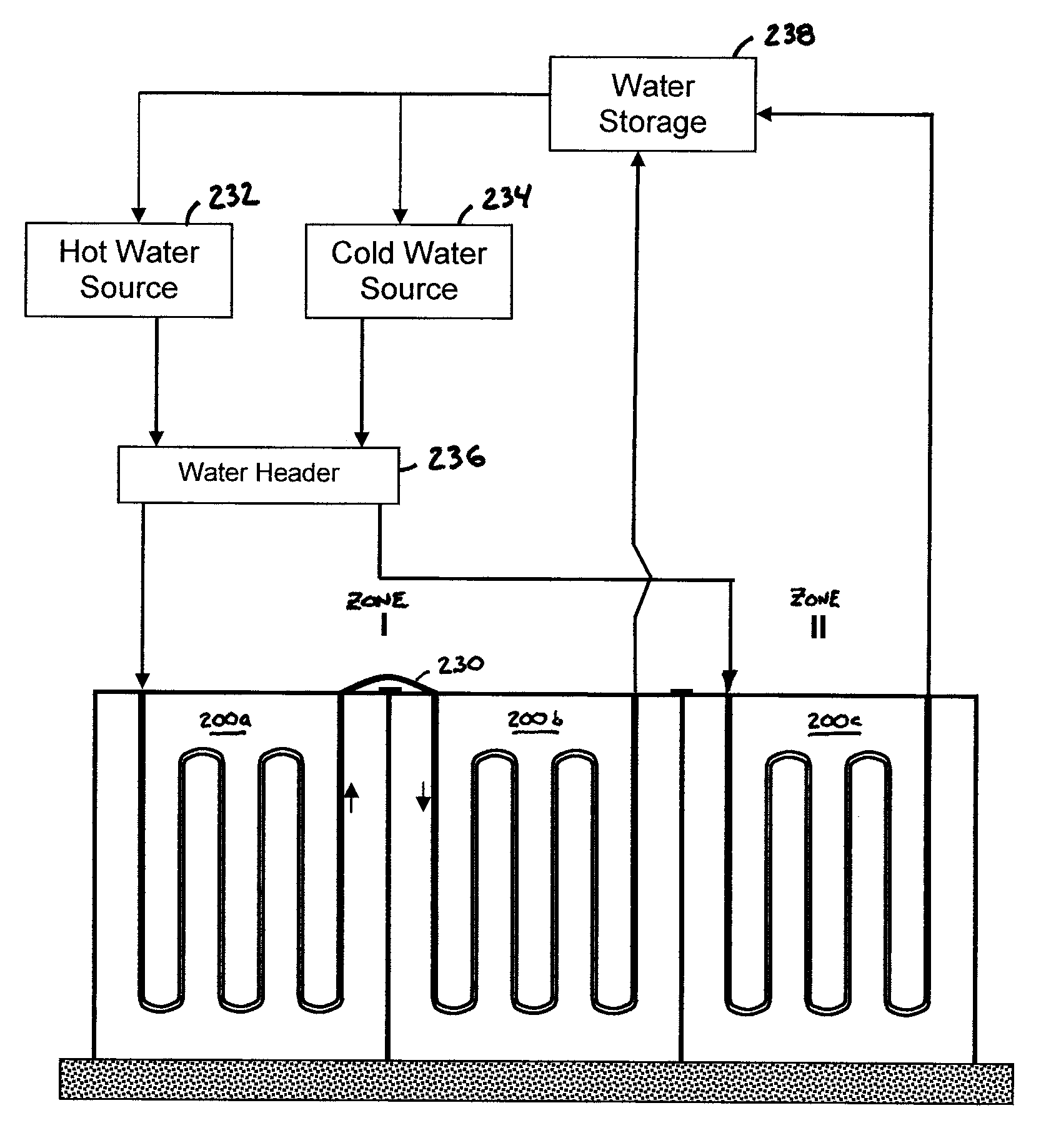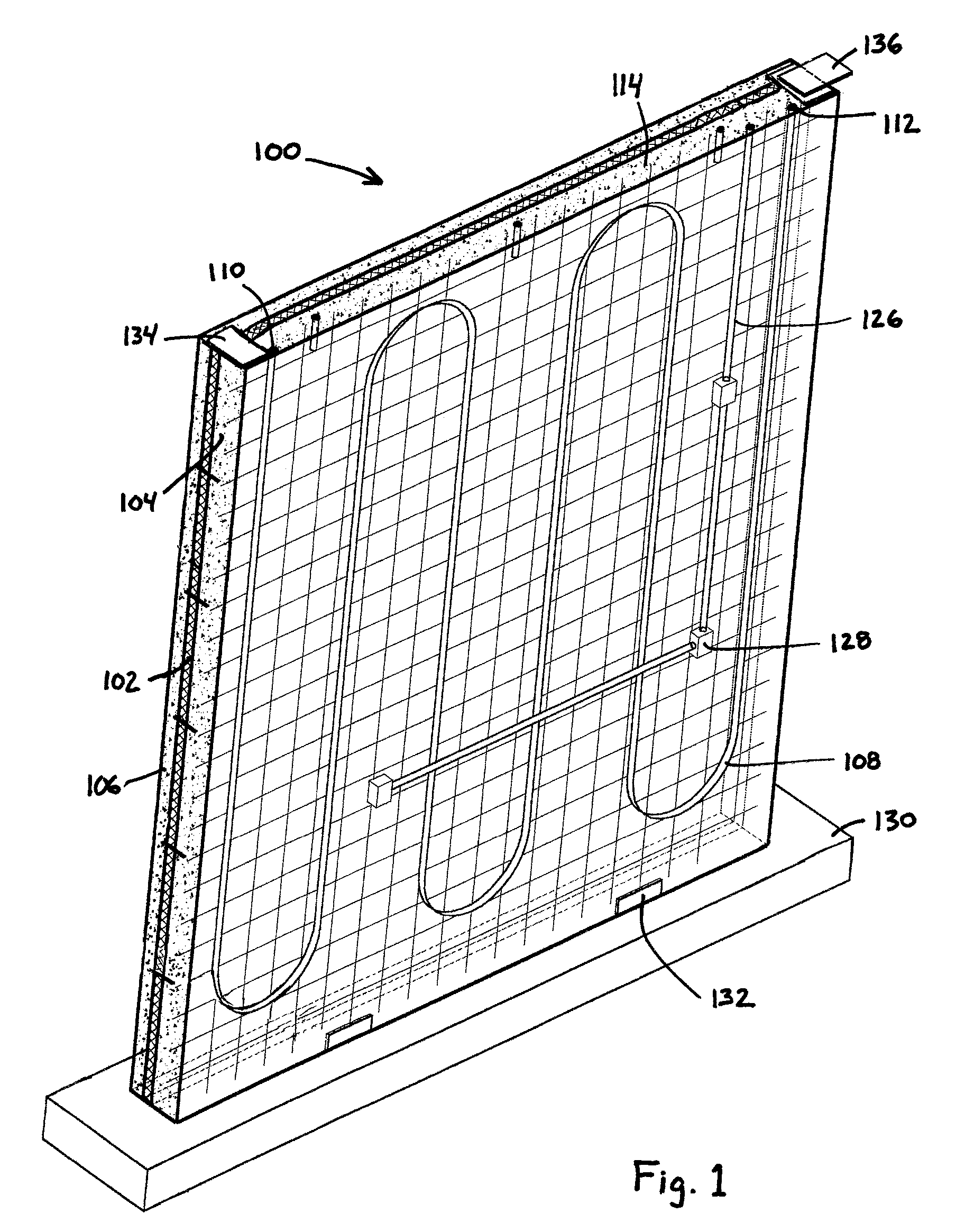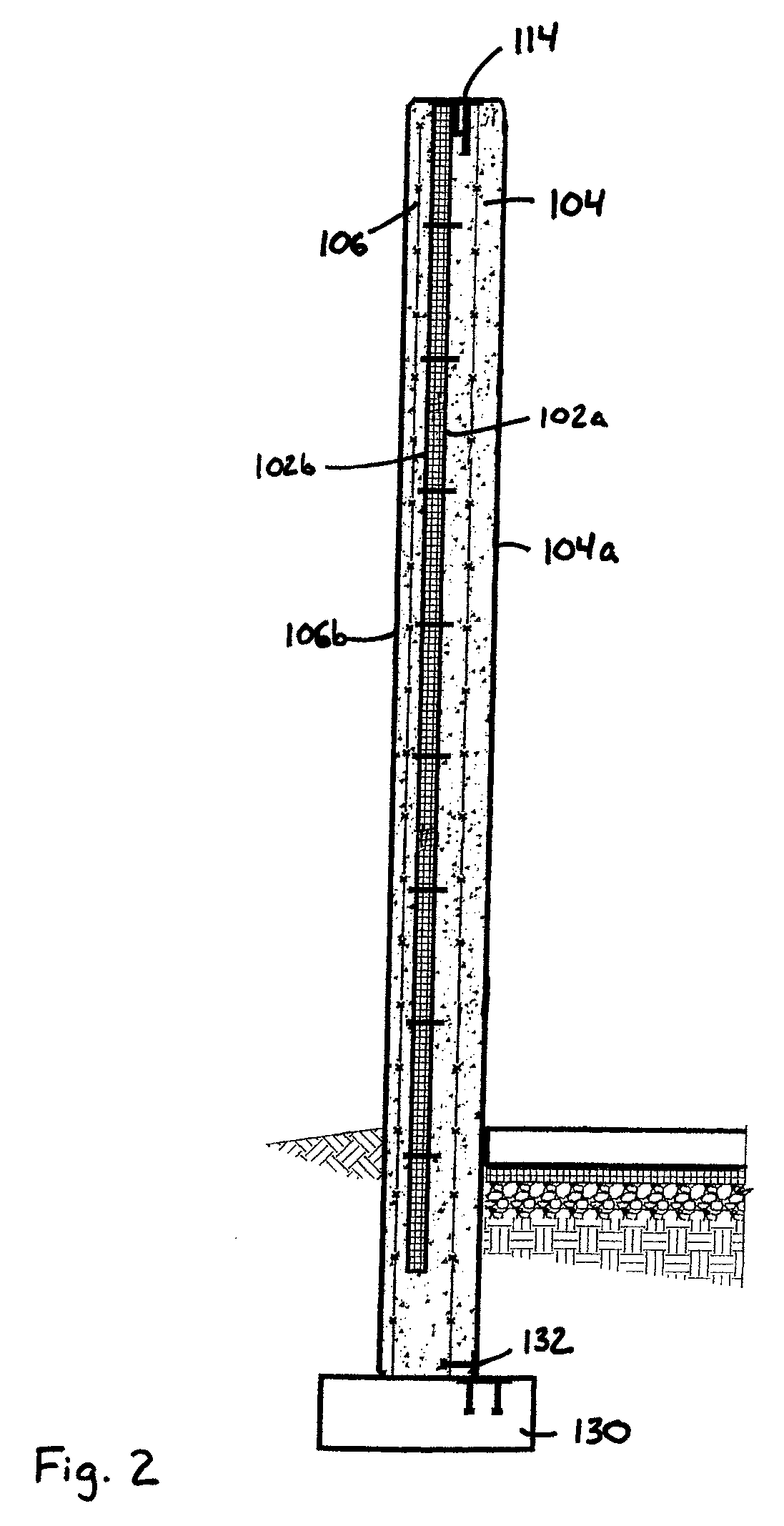Structural wall panels and methods and systems for controlling interior climates
a technology of structural panels and walls, applied in the direction of air heaters, heating types, lighting and heating apparatus, etc., to achieve the effect of increasing the thermal efficiency of the structural panel and more efficient heating and cooling
- Summary
- Abstract
- Description
- Claims
- Application Information
AI Technical Summary
Benefits of technology
Problems solved by technology
Method used
Image
Examples
Embodiment Construction
[0024]The present invention relates to systems and methods for controlling the climate within a building having an enclosed space, such as a personal residence or a commercial building. In particular, the present invention relates to concrete structural panels that can be used for the walls of a building, where the structural panels include one or more fluid conduits for the passage of a thermal transfer fluid through the panel. The structural panels advantageously provide an efficient means for heating and cooling a building interior.
[0025]According to one embodiment, a building includes exterior walls and a roof defining an enclosed space. At least a portion of the exterior walls are fabricated from a unitary structural panel that includes inner and outer concrete layers and a thermal insulation layer disposed between the concrete layers. A fluid conduit is provided within the inner concrete layer, where the conduit is adapted to contain a thermal transfer fluid, such as water and...
PUM
 Login to View More
Login to View More Abstract
Description
Claims
Application Information
 Login to View More
Login to View More - R&D
- Intellectual Property
- Life Sciences
- Materials
- Tech Scout
- Unparalleled Data Quality
- Higher Quality Content
- 60% Fewer Hallucinations
Browse by: Latest US Patents, China's latest patents, Technical Efficacy Thesaurus, Application Domain, Technology Topic, Popular Technical Reports.
© 2025 PatSnap. All rights reserved.Legal|Privacy policy|Modern Slavery Act Transparency Statement|Sitemap|About US| Contact US: help@patsnap.com



